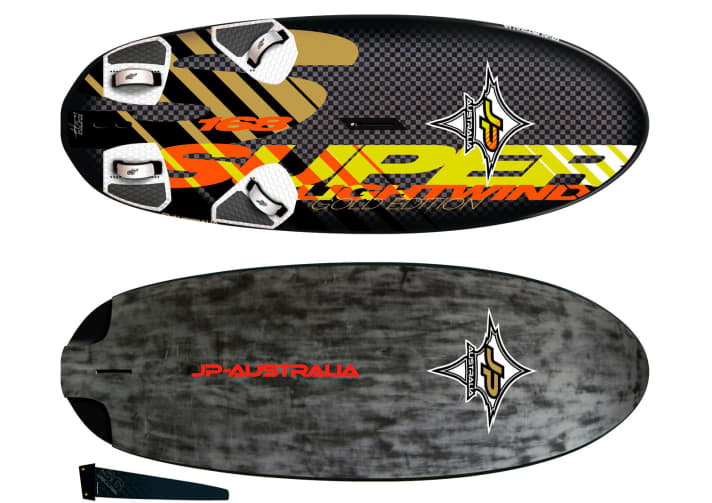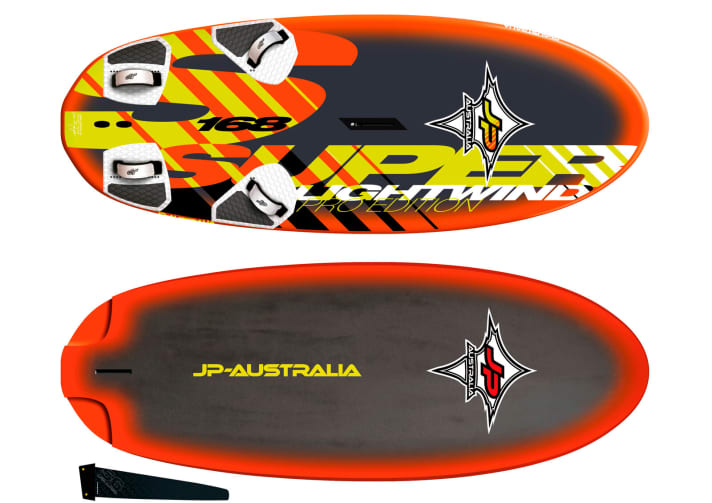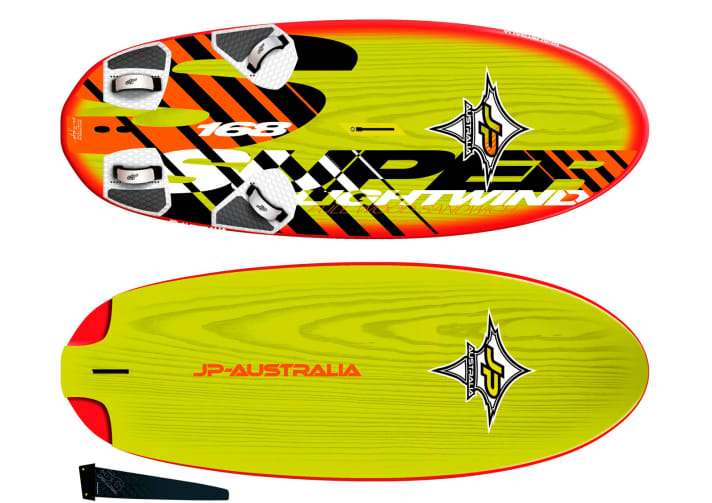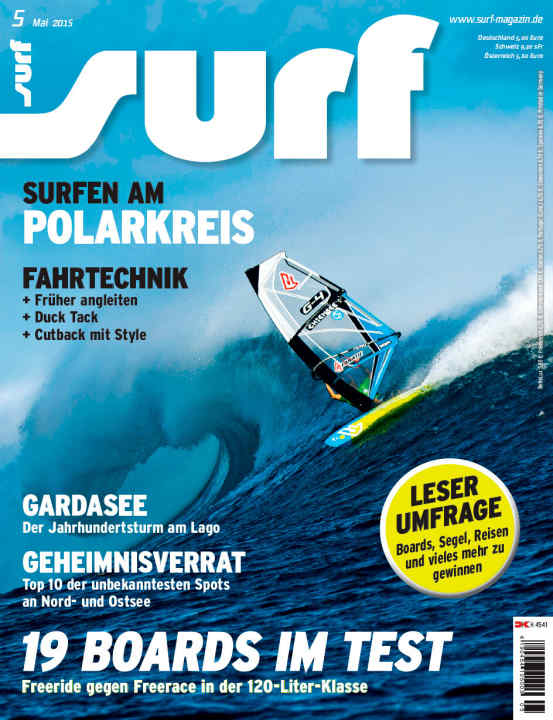Super light wind concept: JP-Australia Super Lightwind 168 L
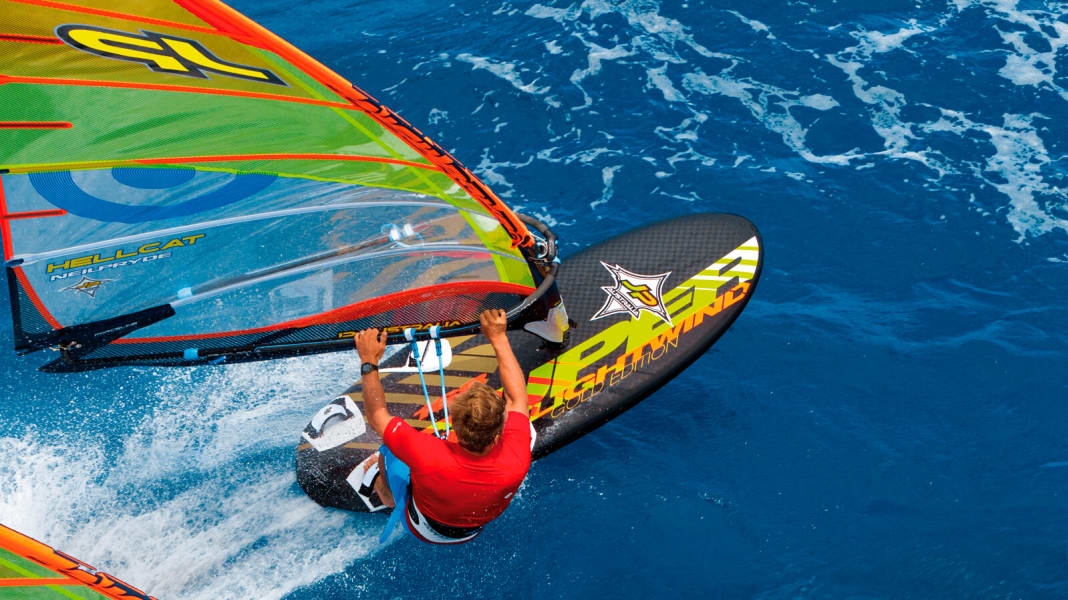
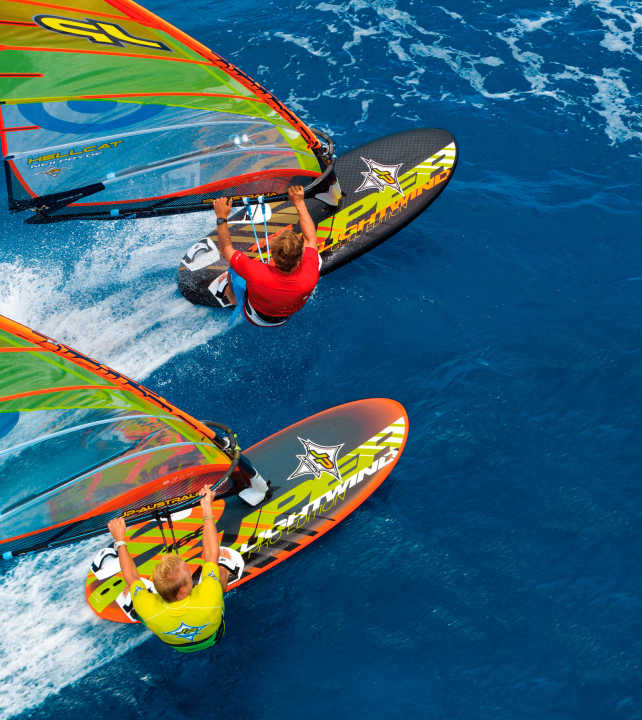
Werner, what turns a freeride board into an early glider? How is the shape designed to maximise gliding performance? At first glance, of course, the width catches the eye. To achieve maximum planing power, you simply need enough gliding surface. It is a board with a special area of use, so you can shape a little wider than with conventional freeride boards. The concept is geared a little more towards performance and a lot of attention is paid to a lively ride. Such a large board should feel light and lively, and you should get the impression of having a smaller board under your feet when planing. The outline towards the tail has more curve. On the one hand, to keep the planing surface in the centre area up to the front footstrap large. On the other hand, this helps the board to "fly" better when planing. Furthermore, the relatively narrow tail allows high speeds and good jibing characteristics despite the width. The even volume distribution is also crucial for easy "sliding". The board needs a neutral water position when bobbing in order to overcome the planing threshold as easily as possible and without much pumping.
With the Magic Ride 132, Super Sport 136 and X-Cite Ride Plus 160, you have other boards in the range that promise early planing. Who should still go for the Super Lightwind? The Super Lightwind shifts the planing threshold down a few knots. It is a board for a special area of use and is aimed at customers who often find light wind conditions and already have some advanced riding skills to utilise its potential. The other freeride boards have a wider range of use and also plane early, but are not special planing boards. The board length is often more important than the width for a harmonious transition into planing for less experienced windsurfers. Doesn't a beginner who is learning to planing slide earlier with a longer X-Cite Ride 160? As already mentioned, the Super Lightwind requires advanced riding skills to utilise its potential. Beginners who are just overcoming the sliding threshold will actually find it easier with slightly longer boards. That's why we have them in our programme.
The Super Lightwind surely only makes sense in combination with certain sail sizes and types, right? Yes, a powerful sail with good planing power is the ideal combination. The target group for this board normally has a camber sail with eight to nine square metres available. With a 7.0 freeride sail, the concept doesn't make sense because you can't utilise the advantages at all.
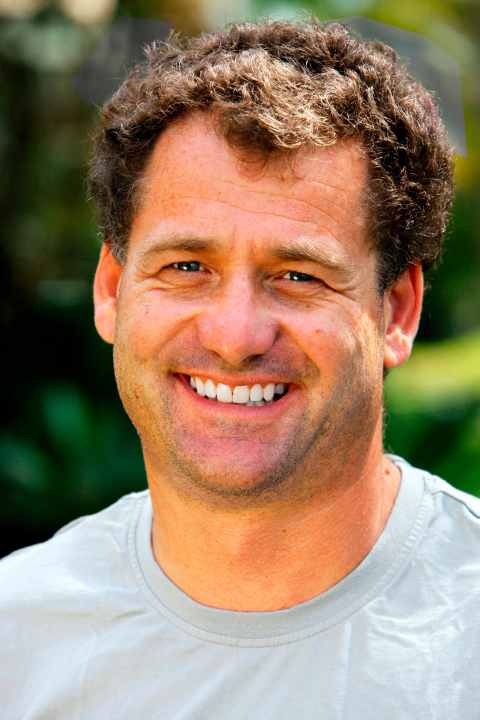
JP-Australia Super Lightwind - INFO
Volume168 litresLength: 245 cm, width: 91 cmFin: Super Lightwind 56, Deep TuttleboxWeight8.1*/8.8**/9.9*** kgPrices2649*/2149**/1799*** Euro*Gold/**PRO/***Full-Wood
